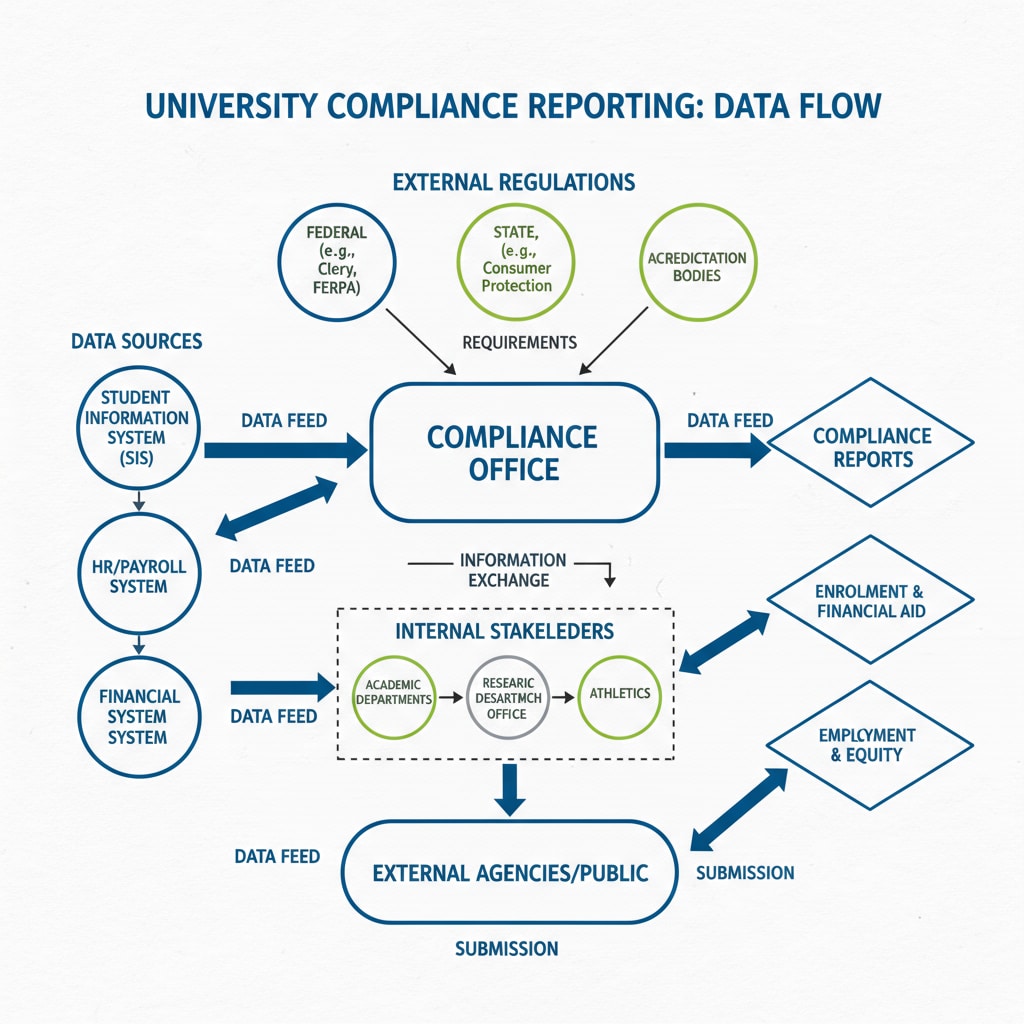In the realm of higher education, compliance reporting, Title IX, and university management are intricately intertwined. The current state of compliance reporting in universities presents a host of challenges that need to be addressed for more effective management.

The Burdensome Compliance Reporting Process
University compliance reporting has become a Herculean task. The process is often fraught with heavy workloads. Staff responsible for compliance reporting have to juggle multiple tasks, from gathering data from various departments to ensuring it meets the requirements of different regulations. This not only consumes a significant amount of time but also leads to increased stress levels. For example, when dealing with reports related to Title IX, which focuses on gender equality in education, the data collection process can be extremely detailed and time-consuming.

The Impact of Key Compliance Requirements
Regulations like Title IX, Clery Act, and FERPA have a profound impact on educational institutions. Title IX, as mentioned earlier, demands strict adherence to gender equality policies. Universities must report on any instances of sexual harassment, discrimination, and ensure equal opportunities in all aspects of education. The Clery Act requires institutions to disclose crime statistics on and around campus, promoting safety and transparency. FERPA safeguards the privacy of student educational records. These regulations, while essential, add another layer of complexity to the compliance reporting process. Title IX on Wikipedia Clery Act on Britannica
Scattered Tools and Their Drawbacks
Another pain point in university compliance reporting is the use of scattered tools. Different departments may use different software or systems to manage and report compliance data. This lack of integration leads to inefficiencies. Data may not be easily shared or transferred between systems, resulting in duplication of efforts. For instance, the human resources department might use one tool for employee compliance reporting, while the academic department uses another for student-related compliance matters. This disjointed approach hampers the overall effectiveness of the compliance reporting system.
Solutions for a More Efficient System
To transform the compliance reporting system from a burden to a source of efficiency, several solutions can be implemented. Firstly, integrating technology platforms can streamline the process. By using a unified platform, data can be easily collected, analyzed, and reported. This reduces the chances of errors and improves the overall accuracy of the reports. Secondly, standardizing processes across departments ensures consistency. Clear guidelines and procedures should be established to ensure that everyone involved in compliance reporting follows the same steps. Finally, cultivating a compliance culture within the university is crucial. This involves training staff and students about the importance of compliance and their roles in ensuring it.
Readability guidance: The article has used short paragraphs to present information clearly. Each section focuses on a key aspect of university compliance reporting. Transition words like ‘for example’ and ‘firstly’ have been used to enhance readability. Lists could be further incorporated in future sections for better organization. The passive voice has been kept to a minimum, and sentence lengths are within the recommended range.


